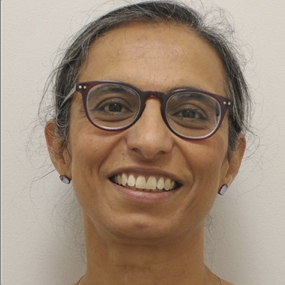NELA – continuing to help patients and healthcare professionals

Consultant Geriatrician and Deputy Director for the Centre of Perioperative Care
Over the past six years the National Emergency Laparotomy Audit (NELA) has done an amazing job. Not only has it provided us with important data, but more importantly it has also given the impetus to improve our services for patients undergoing emergency general surgery (EGS). In such a short time, it has been brilliant to see the improved outcomes for this group of patients.
How has NELA done this?
National audits, such as NELA, are a powerful tool. They allow us to see what is happening to our ‘real-life’ patients, to identify gaps in our local services, to see which hospitals are doing best and to share best practice. This learning informs guidelines and pathways such as ‘The High-Risk Surgical Patient’ and the forthcoming international enhanced recovery programmes for emergency laparotomy. The linking of good practice with a financial incentive, the Best Practice Tariff, has also acted as a carrot for hospitals to support funding for new models of care. Previously we have seen how audit, linked with guidelines and associated financial incentives, has improved outcomes in hip fracture and now it is encouraging to observe similar results in emergency laparotomy.
Older patients and NELA
Geriatricians have been working with the emergency laparotomy network (the precursor to NELA) and with NELA since this work commenced. This is not surprising as more than half of patients undergoing EGS are aged over 65 years and one fifth are aged over 80 years. Whilst it is true that the worst outcomes are seen in the older groups, the reductions in both length of hospital stay and in mortality have also been most marked in older people. This will of course be due to multiple factors, but it is positive to see that the vast majority of people aged over 65 years are now being assessed for frailty. This is an important factor to consider in shared decision-making and is also a potentially modifiable predictor of adverse postoperative outcomes. Furthermore, it is encouraging to see an increase in the number of frail, older patients seen by a geriatrician during their inpatient stay, from 10 per cent in 2014 to 30 per cent in 2019. In a glass-half-full way, you could view this as a 300 per cent increase. On the other hand, you could question why 70 per cent of older patients are still not being seen by a geriatrician. In some cases, it could be that patients have been seen by advanced clinical practitioners, or other members of the alternative workforce, an aspect that may regrettably not be documented because of the way the dataset is recorded.
What can be done to move things forward?
There is a growing consensus that we want all older patients to be co-managed by surgeons, anaesthetists and geriatricians working in trans and/or multi-disciplinary teams. However, it is important to acknowledge that not everyone is convinced this approach results in improved care and outcomes. To work out whether co-management is the preferred future model of care, we need studies examining new service models, their clinical and cost effectiveness, and how to implement them into routine care. We should encourage this work through traditional research as well as the use of quality improvement/implementation science methodology.
It is also important to note that whilst surgeons and anaesthetists are specifically employed to look after patients having EGS, geriatricians are often doing this in limited sessions or in an unpaid capacity. Now is an ideal time to reconsider the Best Practice Tariff and to include review by a geriatrician within it. This would deliver a powerful message and a useful financial incentive to support geriatrician involvement. Of course, we can’t ignore the workforce shortages in geriatric medicine, and need to work together to address this shortage by lobbying for more training posts in geriatric medicine and by developing education and training initiatives for the alternative workforce.
All of this requires leadership. Over the years many of us working within geriatric medicine have happily contributed to the work of NELA. If NELA is committed to improving services and outcomes for older people, now may be the time however to formally acknowledge this through funded roles for geriatricians on the NELA board on the same terms as those for surgeons and anaesthetists.
Looking back over the past six years of NELA, we have much to celebrate and we have much to look forward to. We must work across disciplines and specialties, with organisations such as the Centre for Perioperative Care, to deliver patient-centred rather than surgical-speciality based pathways and to ensure the best outcomes for all of our patients.
Jugdeep Dhesi
